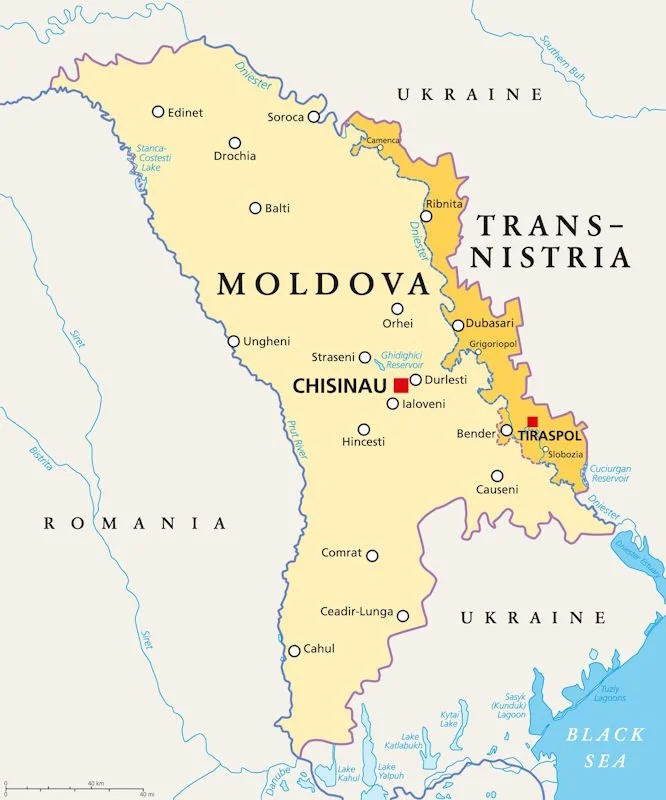August 27: Independence Day in Moldova
Prayer Idea
Pray for the people and government of Moldova.
Map by Peter Hermes Furian / Shutterstock.com.
History Note
Part of Scythia in ancient times, Moldova was known as Bessarabia for several centuries. Moldovans share close ethnic, cultural, and linguistic ties with their neighbors in Romania.
Bessarabia was part of the Russian Empire before World War I, part of Romania between the world wars, and then part of the Soviet Union after World War II. During the collapse of the Soviet Union, Moldova (named after the Moldova River) declared its independence on August 27, 1991.
Today Moldova has a population of 3.5 million. The majority are ethnic Moldovans who speak a language officially known as Romanian. About 90% belong to the Orthodox Church.
The Church of the Dormition, shown at left, is considered the oldest existing church building in Moldova. Built in the 1400s, it is part of a monastery complex located in Căpriana. Photo by Olga Gudumac / Shutterstock.com.
As Moldova was moving toward independence from the Soviet Union, a portion of the country was emphasizing its connection to the Soviet Union. This region, known as Transnistria or Transdniestria, is located east of the Dniester River. After a brief conflict in 1992, Moldova and Transnistria have maintained a tenuous peace. The Moldovan government has granted Transnistria a large measure of autonomy. Transnistria considers itself an independent country, though no other countries officially recognize it.
This 2020 photo from Tiraspol, Transnistria, shows how that region celebrates its Soviet heritage. Transnistria maintains close ties with Russia. Photo by s_oleg / Shutterstock.com.
Eugen Doga (1937-2025) was a Moldovan musician and composer. He wrote church music, ballets, film scores, and more. This photo shows him at a celebration of Moldova’s Independence Day in 2022. Photo by Ducu Rodionoff / Shutterstock.com.
Learn More
This 2016 video shows traditional Moldovan music and dancing.
Find more resources at Homeschool History.



